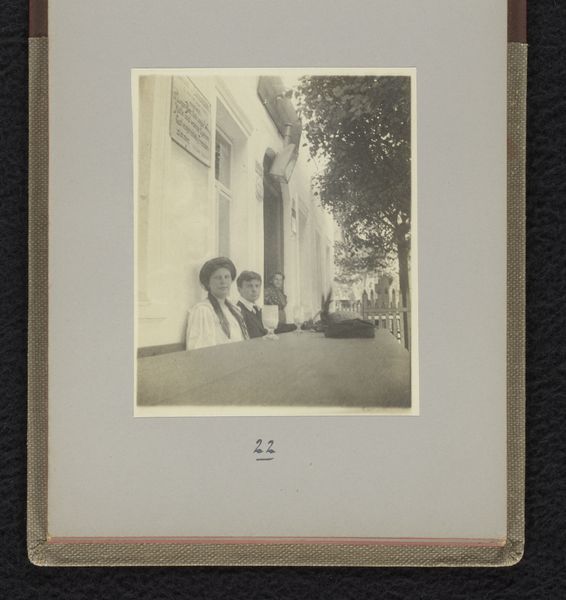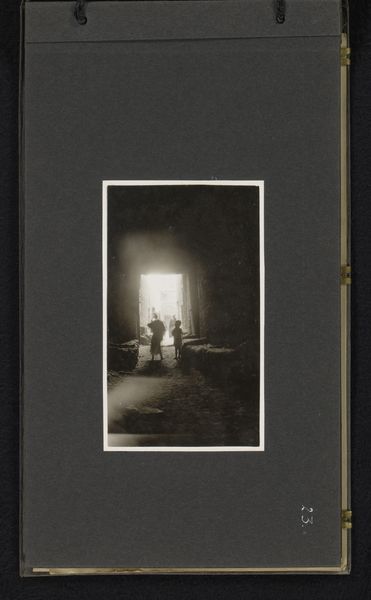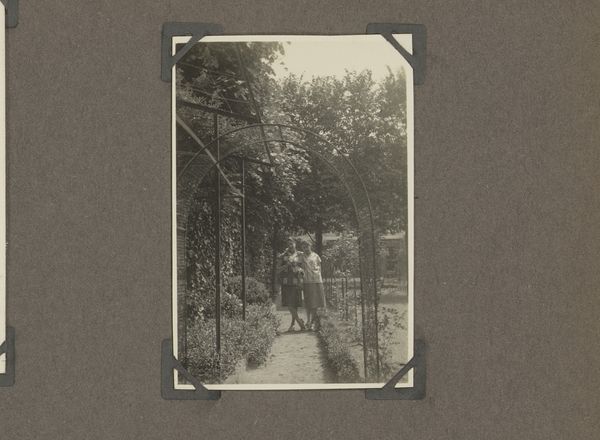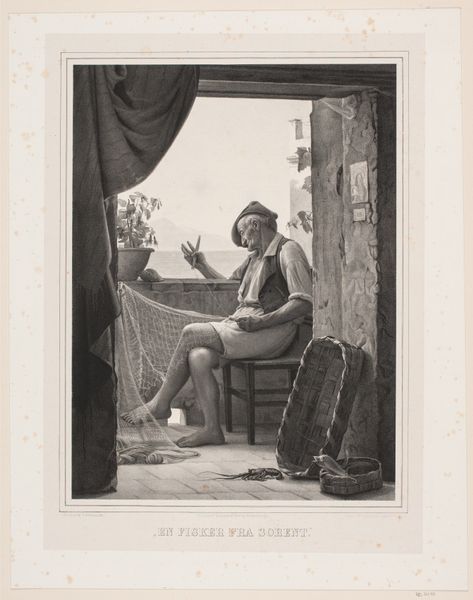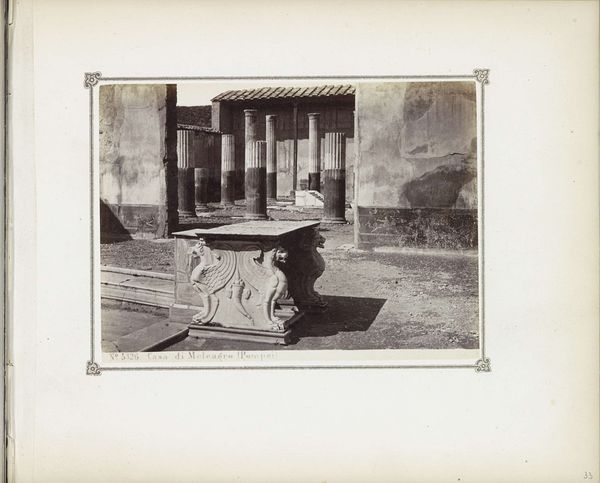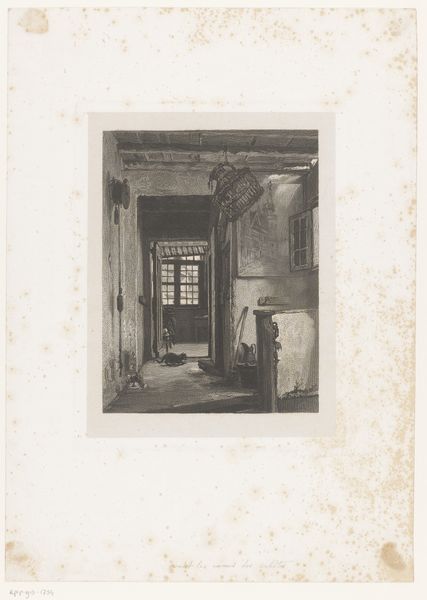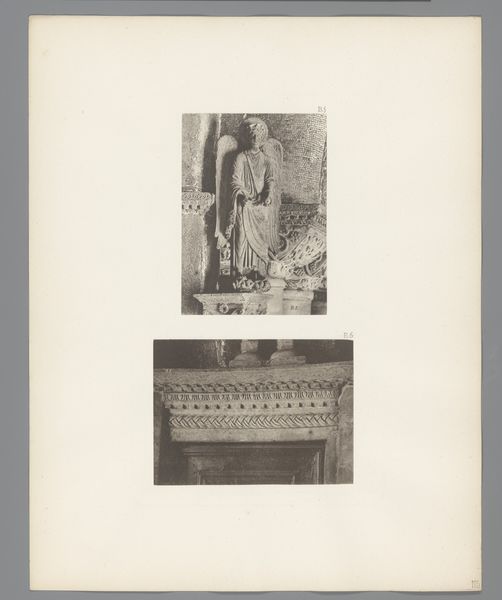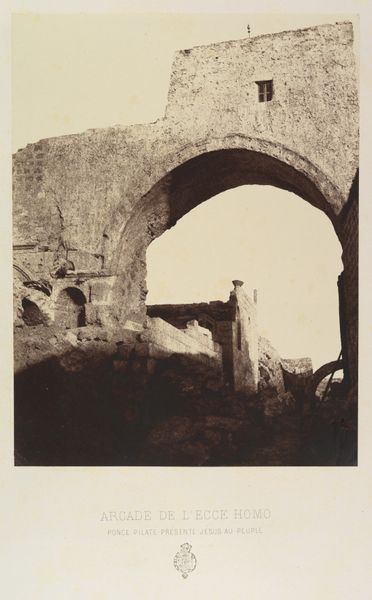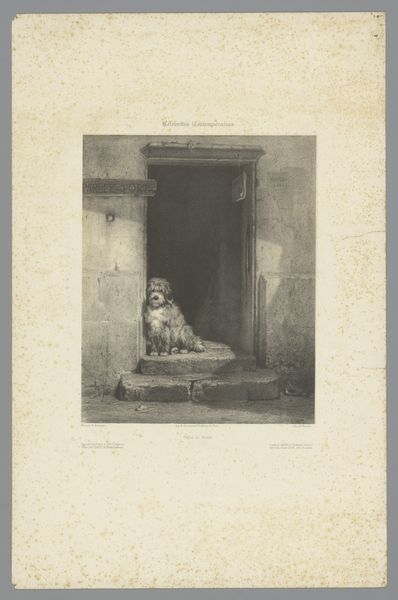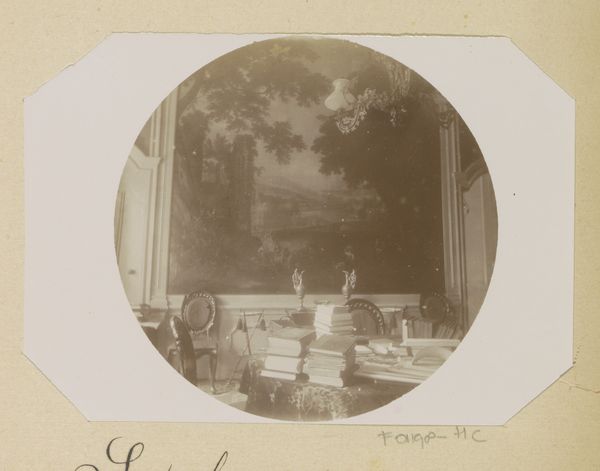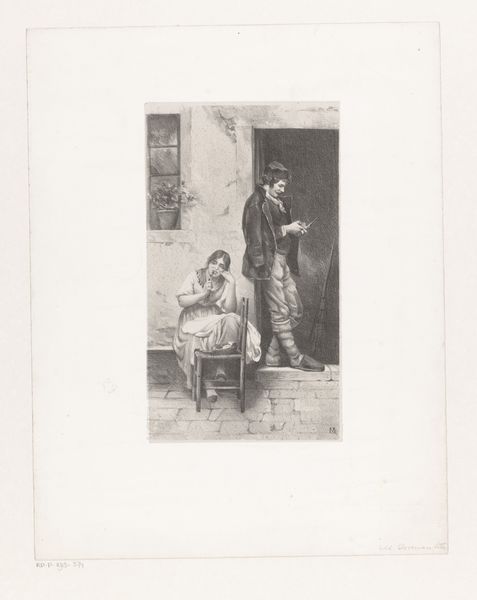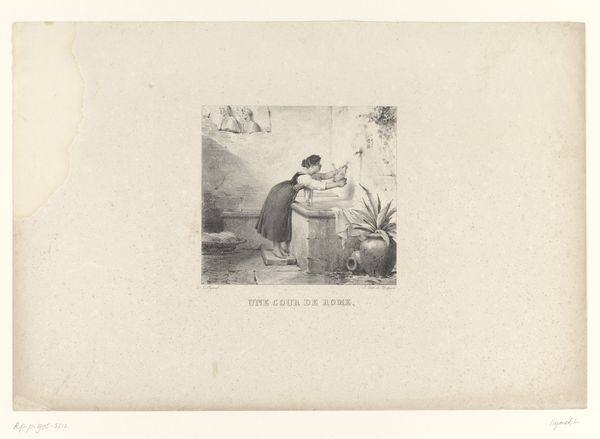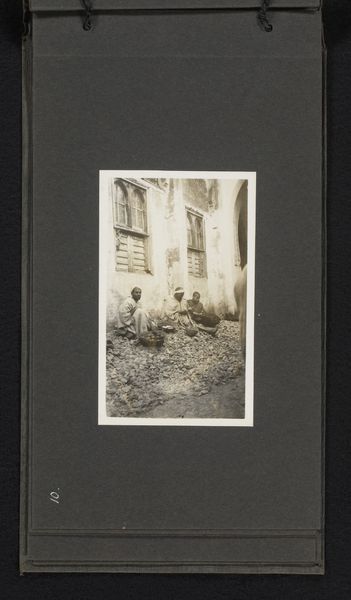
Vrouw, aangeduid als Antoinette, met parasol in de tuin van Villa Tritone, Sorrento 1938
0:00
0:00
plein-air, photography, gelatin-silver-print
#
portrait
#
garden
#
plein-air
#
landscape
#
photography
#
gelatin-silver-print
Dimensions: height 118 mm, width 87 mm
Copyright: Rijks Museum: Open Domain
Editor: This gelatin-silver print, "Vrouw, aangeduid als Antoinette, met parasol in de tuin van Villa Tritone, Sorrento" by Norbert van den Berg, taken in 1938, is lovely. There’s such a still, contemplative quality to it. What draws your eye when you look at this photograph? Curator: The crumbling architecture immediately suggests a layered history. The fluted column and arched opening are classical motifs, standing in partial ruin; note how the photograph connects antiquity to modernity. It’s as though we are peering through a window of time, the parasol implying status, protecting the sitter. Do you think it echoes any particular moment? Editor: Perhaps, there's a sense of wistful isolation in it for me, like something lost in time. Curator: The placement is deliberate. Observe the vine growing over the arch, almost reclaiming the structure. It echoes cycles of growth and decay and emphasizes time's impact on cultural memory. There's the formal pose that also reflects conventions, almost ritualistic even within what would be the informal space of the garden, wouldn't you agree? What symbols or repeated patterns can we infer from the garden? Editor: The contrast between the carefully cultivated garden versus the untamed foliage growing wild—maybe nature versus civilization? It is not so common at the time that women are captured at a moment of leisure and serenity? Curator: Precisely! The visual symbolism presents the sitter as being within this controlled domestic landscape while gesturing to broader tensions and dialogues of the era. The light of Italy casts long shadows in the background and darkness under her skirt, the suggestion here may even play with light as truth or lies. Editor: I see that contrast now, thank you! It makes me see how photography at its time, as a means of showing 'reality', still is composed of a deliberate staged construction of ideas. Curator: It is through these arrangements of time that memory and understanding endure, each photographic symbol contributing a new language to understand human culture.
Comments
No comments
Be the first to comment and join the conversation on the ultimate creative platform.
